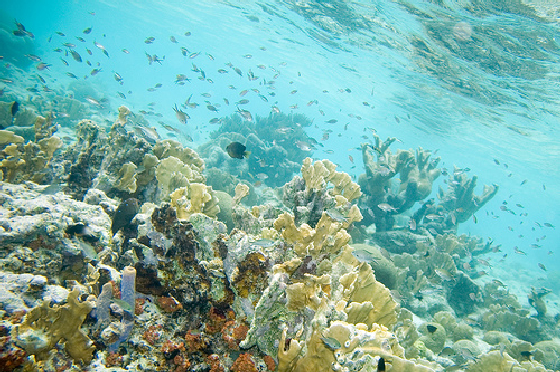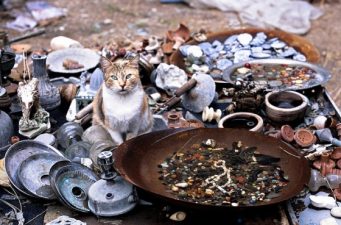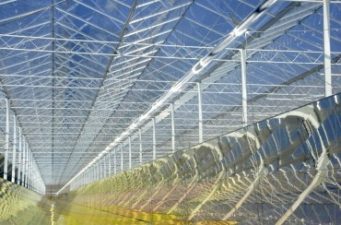 How Many Discs Will Save Abu Dhabi’s Coral Reefs?
How Many Discs Will Save Abu Dhabi’s Coral Reefs?
We have a long history of worrying about the Middle East’s coral reefs. These “rainforests of the sea” – so named because of their extraordinary biodiversity – are at risk of melting if CO2 levels continue to rise. They also face relentless jeopardy from development projects such as Bahrain’s artificial islands. But we have recently learned of an exciting new technology that is bringing Okinawa’s largest coral reef, the Sekisi Lagoon, back to life. Developed by Dr. Mineo Okamoto from the Tokyo University of Marine Science and Technology (TUMAT), these doughnut-sized disks are also being installed in the waters of Saadiyat Island and Al Dhabeiyah, Abu Dhabi.
[image via flickr]
Made of calcium carbonate, of which coral skeletons are composed, the disks have certain cracks and crevices that encourage coral larvae growth. They are then stacked on top of one another, creating a coral architecture that is compared to condominiums. The Environment Agency Abu Dhabi (EAD) estimates that coral growth in this region occurs at a rate of 1cm per year.
Hot Polyps
According to the United Nations Environmental Program, “corals are tiny animals, called polyps, that are related to or look like sea anemones.” That they grow in the Arabian Gulf at all is astonishing since the water temperature can reach upwards of 35°C, at least 5°C higher than optimum. Usually, high temperatures such as these cause coral bleaching, which frequently results in coral death. But they do survive, which gives EAD scientists hope that coral reefs worldwide can acclimate to changing conditions.
The World Wildlife Fund lists 200 conservation priorities worldwide, based on environmental features such as: “species richness, endemism, higher taxonomic uniqueness, unique ecological or evolutionary phenomena, global rarity of habitats, intactness and representation.” Among the 43 marine ecoregions listed, the Arabian Gulf is classified as “critically endangered.” Healthy reefs provide habitat for hundreds of species, so rebuilding them would go a long way to improve the Gulf’s overall health.
Raising Coral from the Dead
Despite a lack of total regional cooperation, the Emirates Wildlife Society (in concert with WWF), the Supreme Council for the Environment and National Reserves (SCENR) of the State of Qatar, the EAD, and the National Coral Reef Institute have instituted a plan to restore the reefs before they are completely eradicated. This will be no easy task since in 2008, they reported that 65% of the Arabian Gulf’s reefs might already be lost, while 30% are at a “threatened critical stage.”
Coral condominiums are a start, as are permitting procedures that demand environmental studies and limit dredging and other harmful activities. However, given such advanced decline and gradual reparation rates, and with anthropogenic threats unabated, will an underwater building project on the scale of the Egyptian pyramids be required to save the Gulf?
More Coral Stories:
Monitoring Stations in the United Arab Emirates Show Stressed Out Coral
Coral Reefs Get Sexy To Cope With Global Warming
Will Coral Reefs At Aqaba Be Destroyed By Litter




